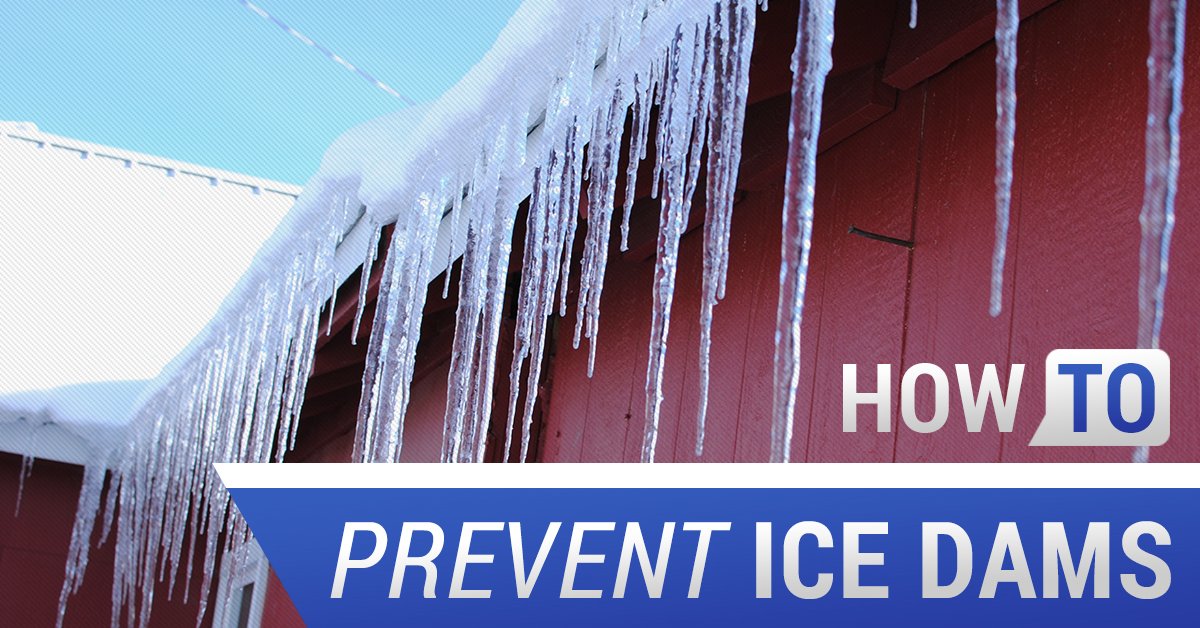02/05/2016
How To Prevent Ice Dam Damage

What Are Ice Dams?
Have you ever heard of an ice dam? It’s a ridge of ice that can develop at the edge of your roof, preventing melting ice from properly draining.
When this ice builds up in the gutter and pushes up under your roof shingles after prolonged cycles of freezing and thawing, it can leak through the roof deck upon thawing, causing significant damage to your home.
Negative impacts might include:
• Odorous, rotting wall cavities, damaged windows and doors
• Decaying structural framing members
• Mold and mildew on wall surfaces
• Exterior and interior paint blisters / peels along with plaster or drywall damage
• Potential allergy triggers for allergen suffers
What Causes Ice Dams?
A lot goes into the formation of an ice dam. It has to do with the interaction between the amount of heat loss from a house, snow cover, and outside temperatures. When the lower portion of a roof has a temperature below 32°F, the water will flow down from the top and freeze as soon as it reaches that point. The dam will only continue to grow as the snow continues to melt and flow down the roof. Generally, ice damns are most likely to form when the average daily temperatures are consistently below freezing and snow has blanketed the roof for an extended period of time.
Is Damage from Ice Dams Preventable?
Although it is not possible to prevent ice formation entirely, you can impact the relative amount of ice that forms- thus decreasing the amount of damage done to your home. Here are a few suggestions:
1. Manage your home’s heat loss, which in turn will minimize snowmelt. You can do this by making sure your home has the correct amount of attic insulation recommended by the US Department of Energy (USDOE). The USDOE recommended amount of attic insulation for the climactic zone in Ohio is between R49 and R60. If fiberglass insulation was to be used 15 1/2″ to 19″ of insulation would be required. “R value” is a measurement of thermal resistance and measures the ability of heat to transfer from one side of an object to another.
2. Properly venting your home’s attic space will keep the roof deck cold, lowering the deck temperature and preventing ice formation. Be sure to leave soffit vents uncovered by insulation so natural ventilation can occur.
3. Installation of the right amount of ice and water shield material beneath your roof shingles will prevent melting ice and snow from leaking through the roof deck and damaging interior surfaces.
Also, it is worthwhile noting that if there is no snow on the roof, there will be no ice formation. Removing snow is an option, though it can be time consuming and in some cases, impractical.
Don’t let ice dams ruin your winter. Learning how to manage the relative amount of ice that forms on your roof will help prevent unwanted damage.
Authored by Herb Schoen, President & CEO of Garfield 12323, The Home Corporation

